Brahmagiri Fort
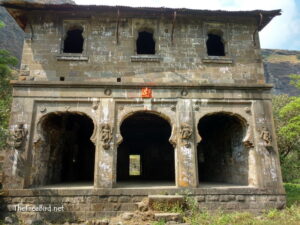
Perched at an altitude of 1,298 meters, Brahmagiri Fort is a mesmerizing destination near Trimbakeshwar, Nashik. This historic fort holds deep spiritual significance as the birthplace of the sacred Godavari River and is closely associated with Lord Shiva. The trek to the fort offers breathtaking panoramic views of the lush Sahyadri ranges, dense forests, and the revered Trimbakeshwar temple.
Legends say that sage Gautama performed penance here, leading to the origin of the Godavari River, earning Brahmagiri its divine status. The trek, though moderately challenging, is rewarding with its scenic beauty, rock-cut steps, and historic caves.
Adventure seekers and pilgrims alike visit Brahmagiri to experience its mythical charm and natural grandeur. Whether you’re a history enthusiast, a nature lover, or a spiritual seeker, Brahmagiri Fort offers an unforgettable journey into Maharashtra’s rich heritage. Visit this legendary fort to explore its myths and witness stunning sunrise and sunset views.
1. The Birthplace of the Godavari River
One of the most famous legends about Brahmagiri Fort is that it is the birthplace of the Godavari River, one of India’s holiest rivers. According to Hindu mythology, Sage Gautama performed penance here to seek blessings from Lord Shiva. Pleased with his devotion, Shiva granted his wish, and the Godavari River emerged from Brahmagiri Hill.
- The river is often referred to as the Ganga of the South due to its sacred status.
- A small kund (water tank) marks the exact spot where the river originates.
- Pilgrims visit this site to take a dip, believing it washes away sins and grants spiritual purification.
- The Trimbakeshwar temple, located at the base of Brahmagiri, is deeply connected to this legend and hosts various religious rituals throughout the year.
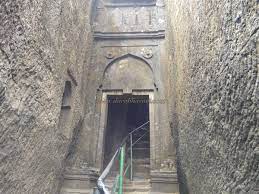
2. Connection with Lord Shiva and Trimbakeshwar Jyotirlinga
Brahmagiri is closely associated with the Trimbakeshwar Jyotirlinga, one of the twelve Jyotirlingas dedicated to Lord Shiva.
- According to legend, Lord Shiva resided on Brahmagiri Hill and blessed Sage Gautama with the sacred Godavari River.
- The Trimbakeshwar Temple, located at the base, is considered one of the most powerful Jyotirlingas.
- Devotees believe that visiting Brahmagiri Fort after worshipping at Trimbakeshwar completes their spiritual journey.
- The Kumbh Mela, which takes place in Nashik every 12 years, is centered around the sanctity of the Godavari River and attracts millions of devotees.
3. Historical Importance and Strategic Significance
Apart from its religious significance, Brahmagiri Fort was also a strategic military location in ancient times.
- Various dynasties and rulers, including the Peshwas and Marathas, controlled this fort due to its strategic location, which provided a vantage point over the Nashik region.
- The fort’s high altitude made it an essential watchtower during battles, ensuring that enemies could be spotted from a distance.
- The remnants of ancient fortifications, stone-carved steps, and caves still exist, offering a glimpse into the past.
- The rock-cut caves on the hill are believed to have been used by monks and sages for meditation.
- It is said that many warriors and kings visited Brahmagiri to seek divine blessings before going to battle.
4. Legends of Brahmagiri Fort
The fort and the hill are deeply intertwined with several Hindu legends. Some of the most prominent ones include:
- Sage Gautama’s Curse and Lord Shiva’s Grace: According to mythology, Sage Gautama unintentionally killed a cow, which was considered a grave sin. To absolve himself, he performed rigorous penance to Lord Shiva. Moved by his devotion, Shiva released the Godavari River to purify Gautama and the land.
- The Battle of Brahmagiri: Historical accounts suggest that the fort was the site of several skirmishes between Marathas, Mughals, and local rulers, making it an important landmark in Maharashtra’s history.
- The Trishul of Lord Shiva: It is believed that Lord Shiva struck his trident (Trishul) on Brahmagiri, splitting the hill into three parts, thus giving the fort its unique landscape.
- Sage Agastya’s Meditation: Some legends also mention that Sage Agastya meditated here, adding to the spiritual aura of the place.
1. The Birthplace of the Godavari River
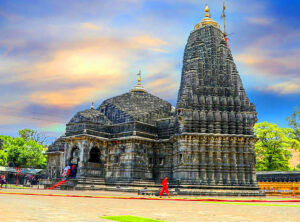
One of the most famous legends about Brahmagiri Fort is that it is the birthplace of the Godavari River, one of India’s holiest rivers. According to Hindu mythology, Sage Gautama performed penance here to seek blessings from Lord Shiva. As a result, Shiva granted his wish, and the Godavari River emerged from Brahmagiri Hill.
It is believed that the river originates from a small water source in the mountains, and devotees consider taking a dip in its waters to be spiritually cleansing. The significance of the river is such that it is often referred to as the “Ganga of the South.”
2. Connection with Lord Shiva
Brahmagiri is closely associated with the Trimbakeshwar Jyotirlinga, one of the twelve Jyotirlingas dedicated to Lord Shiva. Pilgrims believe that visiting Brahmagiri Fort after worshipping at the Trimbakeshwar temple completes their spiritual journey. The temple itself is an architectural marvel with intricate carvings and a deeply rooted spiritual history.
3. Historical Importance
Apart from its religious significance, Brahmagiri Fort was also a strategic military location in ancient times. Various dynasties and rulers, including the Peshwas and Marathas, controlled this fort due to its strategic location, which provided a vantage point over the Nashik region. The fort’s high altitude made it an essential watchtower during battles, and remnants of fortifications can still be seen today.
Trekking to Brahmagiri Fort
1. Trekking Difficulty and Best Time to Visit
The trek to Brahmagiri Fort is of moderate difficulty, making it suitable for both beginners and experienced trekkers. The trail consists of around 750-800 stone steps, carved into the mountains, leading to the top.
Best Time to Visit
- October to March: This is the best time for trekking as the weather remains cool and pleasant.
- Monsoon Season (June to September): The trek is incredibly scenic, with lush greenery, misty hills, and waterfalls, but the trails can be slippery.
- Summer (April–May): The temperatures can be high, so it is essential to carry plenty of water and start the trek early in the morning to avoid the heat.
2. Route and Trekking Experience
- Starting Point: The trek starts from the Trimbakeshwar Temple. Pilgrims and trekkers take the same route to ascend the hill.
- Elevation Gain: The total elevation gain is around 300-400 meters from the base.
- Time Required: It takes approximately 1.5 to 2 hours to reach the top.
- Trekking Path: The trail consists of well-carved stone steps, making it easier to climb compared to other rugged treks in Maharashtra.
- Challenges: Although the steps make the climb easier, the steep ascent can be physically demanding, especially for beginners.
- Facilities: There are small stalls along the route selling water, lemonade, and snacks.
3. Scenic Views Along the Trek
As you ascend the fort, you will witness:
- Lush green valleys and forests, especially during the monsoon.
- Rock-cut caves and temples that add a historical and spiritual essence to the trek.
- The breathtaking view of Trimbakeshwar town below.
- Stunning sunrise and sunset views from the top, making it a paradise for photographers.
- Misty landscapes and cascading waterfalls during monsoon, turning the entire region into a vibrant green paradise.
- Chirping birds and occasional wildlife sightings, adding to the natural beauty of the trek.
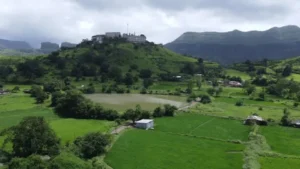
Attractions at Brahmagiri Fort
1. Panoramic View from the Summit
Once you reach the top of Brahmagiri Fort, you are greeted with an awe-inspiring 360-degree view of the Sahyadri mountains. The sight of the Godavari River originating from the hill makes the journey even more special.
- The summit offers stunning sunrise and sunset views, making it a great spot for photography and meditation.
- On clear days, one can see several other forts and peaks in the surrounding Sahyadris.
- During monsoons, low-hanging clouds and mist create a mystical atmosphere, adding to the beauty of the landscape.
2. The Godavari River Origin Point
A small temple at the top marks the exact origin of the Godavari River. Pilgrims visit this sacred site to witness the divine source of the river.
- The water from the origin point is believed to be holy and spiritually purifying.
- There are small kunds (water tanks) where devotees take a dip before offering prayers.
- Religious rituals and ceremonies are performed at the site, especially during festivals like Kumbh Mela.
3. The Lord Shiva Temple
There is a temple dedicated to Lord Shiva, where devotees offer prayers. This temple holds great religious significance as it is believed to be a place where Lord Shiva blessed Sage Gautama.
- The temple architecture is simple yet spiritually powerful, with a small Shivalinga inside.
- Devotees often perform abhishek (ritualistic bathing of the Shiva Linga) using water from the Godavari River.
- The temple surroundings provide a calm and peaceful environment for meditation.
4. Rock-Cut Caves
The fort has several rock-cut caves, which were used by sages and monks in ancient times for meditation. Exploring these caves gives a glimpse into the historical and spiritual past of Brahmagiri.
- Some of these caves contain ancient inscriptions and carvings that depict mythological stories.
- The caves are relatively cool and provide shelter to trekkers during hot days.
- The architecture suggests that these caves might have been used as temporary shelters by warriors and traders in ancient times.
5. Wildlife and Flora
The region around Brahmagiri is rich in biodiversity, with various species of birds, butterflies, and small mammals. The flora includes medicinal plants, dense trees, and vibrant flowers that add to the trek’s beauty.
- The area is home to Indian langurs, wild boars, peacocks, and various reptiles.
- Bird watchers can spot parakeets, eagles, and other local bird species.
- The monsoon season brings lush greenery and blooming flowers, making the trek even more picturesque.
- The presence of medicinal herbs and plants suggests that the region was once used by ancient healers and Ayurvedic practitioners.

Travel Guide: How to Reach Brahmagiri Fort
1. By Road
Brahmagiri Fort is located near Trimbakeshwar, which is well connected by road.
- From Nashik: 28 km (1-hour drive)
- From Mumbai: 180 km (4-5 hours drive)
- From Pune: 240 km (5-6 hours drive)
You can drive to Trimbakeshwar Temple and start the trek from there.
2. By Train
The nearest railway station is Nashik Road Railway Station, around 40 km from Brahmagiri Fort. From the railway station, you can hire a taxi or take a bus to Trimbakeshwar.
3. By Air
The nearest airport is Nashik Airport (Ozar Airport), around 50 km from Trimbakeshwar. Alternatively, Mumbai’s Chhatrapati Shivaji International Airport is around 180 km away.
Tips for a Safe and Enjoyable Trek
- Start early in the morning to avoid the harsh afternoon sun.
- Wear comfortable trekking shoes with good grip to prevent slipping on the stone steps.
- Carry sufficient water and snacks, as there are limited food stalls along the trek.
- Avoid trekking during heavy monsoons, as the steps can be slippery and visibility might be low due to fog.
- Respect the religious sites—Brahmagiri is a sacred place, so avoid loud music, littering, or any disruptive behavior.
- Be prepared for steep steps and take breaks if needed to catch your breath.
- Carry a raincoat or waterproof gear if trekking in the monsoon season to protect yourself from sudden rain showers.
- Use a walking stick if you are not comfortable climbing long flights of stairs, as it provides extra balance and support.
- Wear light, breathable clothes to stay comfortable during the trek, especially in summer.
- Travel in groups or inform someone about your trekking plan for safety, as certain parts of the trek might be isolated.
- Keep a small first aid kit handy in case of minor injuries or dehydration.
- Avoid carrying unnecessary heavy bags, as climbing with extra weight can make the trek more challenging.
- Capture memories, but be mindful of your surroundings—avoid risky selfies near steep edges or slippery spots.
Conclusion
Brahmagiri Fort is a must-visit destination for those seeking spiritual enlightenment, adventure, and breathtaking natural beauty. Whether you’re a devotee visiting Trimbakeshwar Temple, a history lover exploring ancient forts, or a trekking enthusiast looking for a rewarding hike, Brahmagiri Fort offers an unforgettable experience.
From its mythological significance as the birthplace of the Godavari River to its stunning views of the Sahyadris, this fort is a perfect blend of history, culture, and adventure. The sense of serenity and divinity at the top makes it an experience worth cherishing. The trek challenges your physical endurance while rewarding you with peace, spirituality, and an unparalleled connection with nature.
Brahmagiri Fort also serves as a reminder of India’s rich historical past, where rulers and sages alike sought refuge and inspiration. Its caves, temples, and breathtaking vistas make it a treasure trove for nature lovers and explorers.
Plan your trip to Brahmagiri Fort and immerse yourself in the beauty, spirituality, and adventure of this remarkable place. Whether you go for a pilgrimage, a history tour, or an adventure trek, Brahmagiri Fort promises memories that will last a lifetime.
Follow More Article Vaishno Devi
Brahmagiri Fort Map

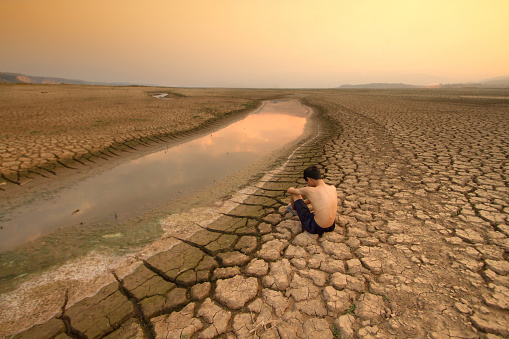


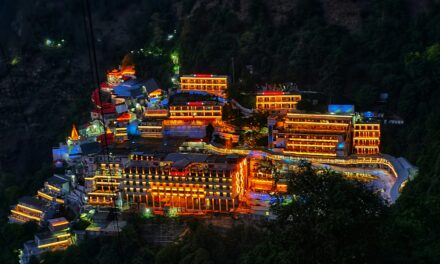

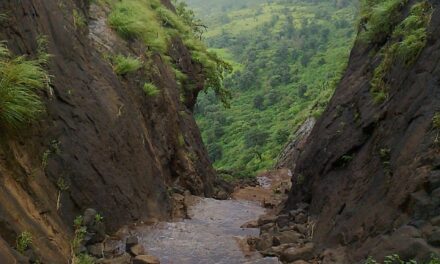
Recent Comments